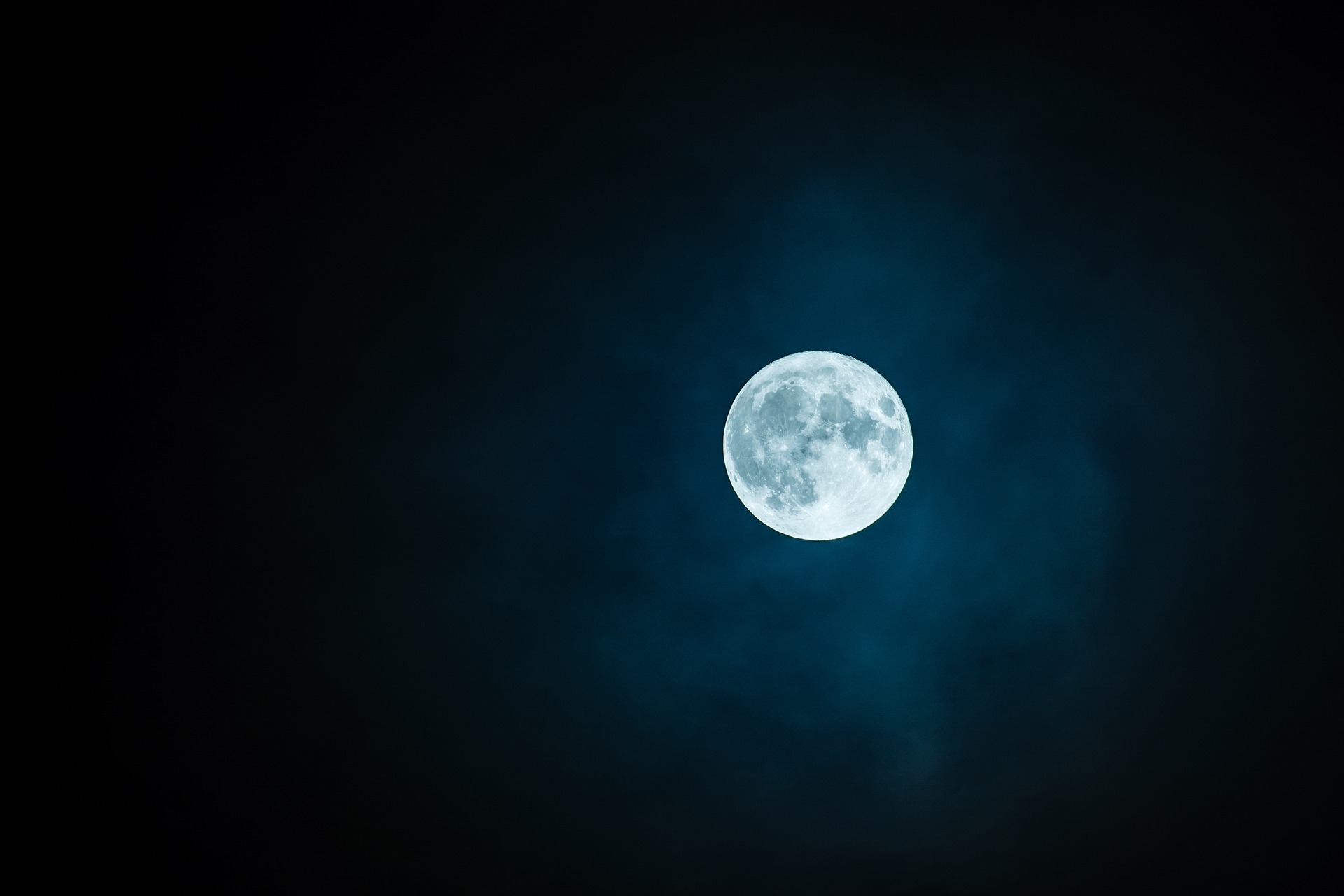The earliest documented reference to a blue moon is from 1528 in an anti-clerical pamphlet by William Roy and Jeremy Barlowe: “O churche men are wyly foxes […] Yf they say the mone is blewe / We must beleve that it is true / Admittynge their interpretacion.”
“Once in a blue moon” is based on an actual blue (or, at least, blueish) moon caused randomly by nonstandard atmospheric conditions from volcanic eruptions or forest fires. Depending on their size, which varies, it’s the atmospheric particles from these events that cause the appearance of a change of color to the moon. If they happen to be wider than 0.7 micrometers, the wavelength of red light, they will scatter blue light that makes the moon appear that color just before sunrise or sunset. Because this is rare and random, thus “once in a blue moon.” Ice particles may cause the same effect. Robert F. Scott wrote in his Antarctic diary on July 11, 1911, “…the air thick with snow, and the moon a vague blue.”
The seasonal definition/Maine definition, which is the one with the best credentials, but the more difficult to determine, was first publicized in the 1937 Maine Farmer’s Almanac, published by Henry Trefethen. The blue moon is when there are 4 full moons within a season as measured by the solstices and equinoxes, and it’s the third full moon, the outlier, because the others all have specific names.
Winter: Moon After Yule, Wolf Moon, Lenten Moon
Spring: Egg Moon, Milk Moon, Flower Moon
Summer: Hay Moon, Grain Moon, Fruit Moon
Winter: Harvest Moon, Hunter’s Moon, Moon Before Yule
If there were a 4th moon in any of those seasons, it would be in 3rd place and called a Blue Moon.
What I have erringly called a Blue Moon was when there were 2 full moons within one month. I suspect you may be in the same boat.
That definition, however, is based on first, an omission, and second, a misunderstanding. Laurence Lafleur in Sky& Telescope magazine, July 1943, using the Maine Farmer’s Almanac as his source, omitted a few critical facts in defining a Blue Moon. He never mentioned 2 full moons in a month, but, more or less, was explaining the Maine definition. James Hugh Pruett, an amateur astronomer, in 1946, using Lafleur’s earlier Q&A response, but without the original Almanac, came up with the 2 full moons in 1 month idea after misunderstanding Lafleur; easy to do given Lafleur’s omissions.
The next Blue Moon is, appropriately, the night of the Democratic Convention, August 19.

Very interesting!